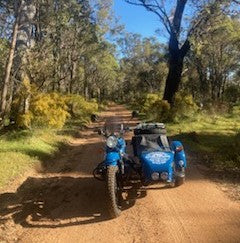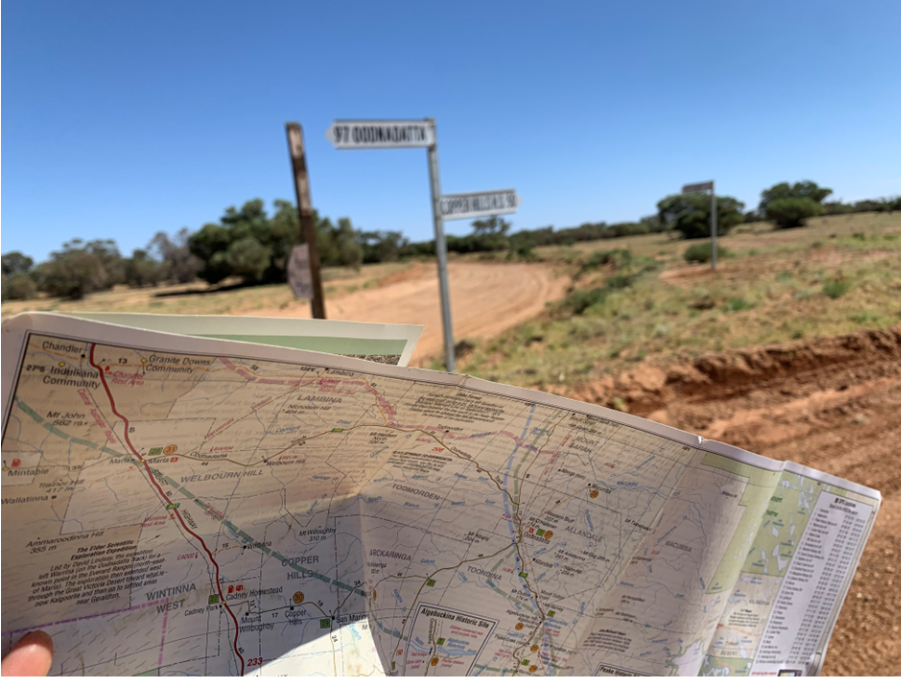Motorcycle Myths, Lore and Legend.
Perspective is a multifaceted anomaly that morphs over time, today's rooster is tomorrow's feather duster and half-memories evolve into myths. As a society we venerate our elders, so what is the accepted motorcycle Gold Standard for quality - a Brough Superior, a Vincent, a Laverda Jota, a ZX10? Any answer has to be generational and nuanced by personal experience and the input of period road testers opinion. The belief and acceptance of old truisms about Widow-maker Kawasaki 500s, impossible Velocette clutch adjustments, Jap Crap, VF Honda camshaft failure, Triumph unreliability versus BMW reliability, ill handling H-Ds, how to make BSA Bantam gaskets from breakfast cereal boxes, Ducati snuffbox switch gear, 'nothing faster than a BSA Gold Star\Hyabusa", Joe Lucas The Prince of darkness, original Pirelli Phantoms and Chen Shin tyres can pretty accurately carbon-date a rider.
Like all good rumours there is always a scintilla of truth somewhere in the fog, but bad news travels fastest and sticks longest. Bikes that overcame a difficult birth, CX500, became a byword for penurious reliability, late 1980 Suzukis came with improved regulator rectifiers, Honda FVQ (Fade Very Quickly) rear shocks weren't that bad. You didn't need the strength of a gorilla to operate a Laverda clutch or Guzzi throttle, a GSX1100EFE wouldn't automatically try to kill you, RE5 Wankels could do more than 10,000 km without needing rotor seals and a Hyosung can make its destination.
Boomer actress self denial apart, it is misleading to think a rebuilt 60 year old machine is still in its prime, it is rather an example of its time - a portal back to how things were with maybe a sprinkling of modern quality. Speed, despite what the radar says, is relative to the period. Tyre development can ensure your old classic performs better than new - with the caveat that manufacturers still produce something in the required size. Metallurgy - particularly bearing quality and machining accurate tolerances - now have amazing performance (even Russian bearings are now truly circular!). Heat engines appreciate accurately metered fuel and spark and supplying these to older motorcycles is the equivalent of Viagra and ensures a more spritely performance.
The old quote about Not meeting your heroes is pretty valid when it comes to motorcycles. I try to avoid returning to a bike I had in my youth because I know I have sugar-coated and rose tinted the memories and to be frank, I don't want to have to reappraise and overlay them, so no return to a Guzzi Le Mans Mk1 for me. Sometimes the build up just isn't worth it, out of time and out of place even a 2stroke 750 Kawasaki can seem mundane under hard acceleration, mind you the lack of braking performance can certainly get the adrenalin unexpectedly flowing... A date with Brigitte Bardot these days is not going to be the same as one in the 1970s.
Time and experience move us ever onward. Certainly there were less speed traps, traffic and licensing demands back in the Good Old Days. Mind you, there were more breakdowns, atrocious road surfaces, punctures, non-efficient wet weather gear and you never left home without a toolkit. The concept of touring interstate was something for the elite and well-heeled R series BMW rider. We rode harder and faster by comparison to the generation before us, the range of bikes available was never surpassed, air cooled 2 stroke singles to liquid cooled 6 cylinder behemoths to the sleep denying soundtrack of expansion chambers, 4-1, Conti's and Giannelli's.
Motorcycles keep evolving and new directions are taken. Gear and brake levers swapped sides decades ago, did Adventure Touring become a thing with the introduction of the R80G/S? No, people had been travelling on all sorts of bike prior, but it helped push the idea and another new market segment was born. First model R80G/S bikes are now pulling north of 20K, even CT110s are over $1500 for those who like to tour on a reduced budget. Yamaha almost went broke trying to match Honda in all the market segments, the XZ550 was the answer to a question nobody was asking. The walls seemed to close in a bit as 2strokes got banned in California and suddenly you couldn't ride a bike without government approved training and testing. Capacity and power limits coupled to a longer apprenticeship may have blunted motorcycling's wild and rebellious attraction whilst the increased promotion and TV coverage of GP racing drew in new converts.
For some their Golden Age ended with the abandonment of belt-drive and side valves, for others the introduction of disc brakes and CDI ignitions signaled the end of all that was holy. ABS, electronic intervention, radar, cruise control - all these steps will have their adherents and detractors. Somewhere there is the bike that encapsulates perfection for you, it may be the one you lusted after in your formative years but couldn't acquire at the time, it may be from a previous age or it may be coming out next year. You may be cursed by the fact it is prohibitively rare or expensive or weird and never available in this country. It doesn't really matter if no-one else buys into the idea that the Yamaha XT660 engine is a superlative piece of engineering and when mated with a MuZ chassis becomes the apogee of a road-going 4 stroke single, it leaves more Vincent Rapides for others.
As classic motorcycles wax and wane as investment opportunities, age denial portals or hopeless money pits, just get something you like and go riding, remember Kawasaki's jingle, "Let the good times roll". Go and make some more memories, you legend.
Like all good rumours there is always a scintilla of truth somewhere in the fog, but bad news travels fastest and sticks longest. Bikes that overcame a difficult birth, CX500, became a byword for penurious reliability, late 1980 Suzukis came with improved regulator rectifiers, Honda FVQ (Fade Very Quickly) rear shocks weren't that bad. You didn't need the strength of a gorilla to operate a Laverda clutch or Guzzi throttle, a GSX1100EFE wouldn't automatically try to kill you, RE5 Wankels could do more than 10,000 km without needing rotor seals and a Hyosung can make its destination.
Boomer actress self denial apart, it is misleading to think a rebuilt 60 year old machine is still in its prime, it is rather an example of its time - a portal back to how things were with maybe a sprinkling of modern quality. Speed, despite what the radar says, is relative to the period. Tyre development can ensure your old classic performs better than new - with the caveat that manufacturers still produce something in the required size. Metallurgy - particularly bearing quality and machining accurate tolerances - now have amazing performance (even Russian bearings are now truly circular!). Heat engines appreciate accurately metered fuel and spark and supplying these to older motorcycles is the equivalent of Viagra and ensures a more spritely performance.
The old quote about Not meeting your heroes is pretty valid when it comes to motorcycles. I try to avoid returning to a bike I had in my youth because I know I have sugar-coated and rose tinted the memories and to be frank, I don't want to have to reappraise and overlay them, so no return to a Guzzi Le Mans Mk1 for me. Sometimes the build up just isn't worth it, out of time and out of place even a 2stroke 750 Kawasaki can seem mundane under hard acceleration, mind you the lack of braking performance can certainly get the adrenalin unexpectedly flowing... A date with Brigitte Bardot these days is not going to be the same as one in the 1970s.
Time and experience move us ever onward. Certainly there were less speed traps, traffic and licensing demands back in the Good Old Days. Mind you, there were more breakdowns, atrocious road surfaces, punctures, non-efficient wet weather gear and you never left home without a toolkit. The concept of touring interstate was something for the elite and well-heeled R series BMW rider. We rode harder and faster by comparison to the generation before us, the range of bikes available was never surpassed, air cooled 2 stroke singles to liquid cooled 6 cylinder behemoths to the sleep denying soundtrack of expansion chambers, 4-1, Conti's and Giannelli's.
Motorcycles keep evolving and new directions are taken. Gear and brake levers swapped sides decades ago, did Adventure Touring become a thing with the introduction of the R80G/S? No, people had been travelling on all sorts of bike prior, but it helped push the idea and another new market segment was born. First model R80G/S bikes are now pulling north of 20K, even CT110s are over $1500 for those who like to tour on a reduced budget. Yamaha almost went broke trying to match Honda in all the market segments, the XZ550 was the answer to a question nobody was asking. The walls seemed to close in a bit as 2strokes got banned in California and suddenly you couldn't ride a bike without government approved training and testing. Capacity and power limits coupled to a longer apprenticeship may have blunted motorcycling's wild and rebellious attraction whilst the increased promotion and TV coverage of GP racing drew in new converts.
For some their Golden Age ended with the abandonment of belt-drive and side valves, for others the introduction of disc brakes and CDI ignitions signaled the end of all that was holy. ABS, electronic intervention, radar, cruise control - all these steps will have their adherents and detractors. Somewhere there is the bike that encapsulates perfection for you, it may be the one you lusted after in your formative years but couldn't acquire at the time, it may be from a previous age or it may be coming out next year. You may be cursed by the fact it is prohibitively rare or expensive or weird and never available in this country. It doesn't really matter if no-one else buys into the idea that the Yamaha XT660 engine is a superlative piece of engineering and when mated with a MuZ chassis becomes the apogee of a road-going 4 stroke single, it leaves more Vincent Rapides for others.
As classic motorcycles wax and wane as investment opportunities, age denial portals or hopeless money pits, just get something you like and go riding, remember Kawasaki's jingle, "Let the good times roll". Go and make some more memories, you legend.





Leave a comment